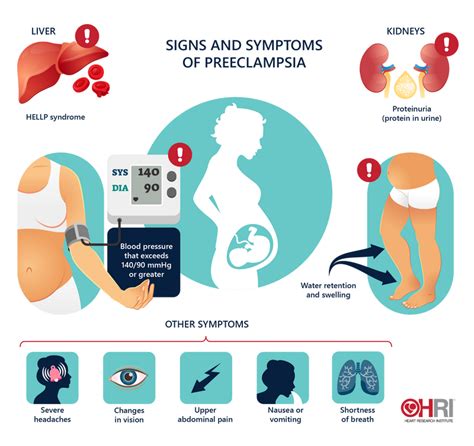Preeclampsia is a pregnancy complication characterized by high blood pressure and signs of damage to another organ system, most often the liver and kidneys. The condition typically develops after 20 weeks of gestation and can be a significant threat to both the mother’s and the baby’s health if not managed properly. Understanding the signs and symptoms of preeclampsia is crucial for early detection and timely medical intervention.
Introduction to Preeclampsia
Preeclampsia is a complex condition that affects a significant number of pregnancies worldwide. It is diagnosed when a pregnant woman develops high blood pressure and evidence of liver or kidney dysfunction. High blood pressure in pregnancy is defined as a systolic pressure of 140 mmHg or higher, or a diastolic pressure of 90 mmHg or higher. The condition can range from mild to severe and, in some cases, may develop into a more dangerous condition known as eclampsia, which involves seizures.
Signs and Symptoms of Preeclampsia
While some women with preeclampsia may not exhibit noticeable symptoms, especially in the early stages, there are several signs that can indicate the presence of the condition. These include:
- High Blood Pressure: This is the most common indicator of preeclampsia. Regular blood pressure checks are part of prenatal care, allowing healthcare providers to monitor any changes.
- Protein in the Urine (Proteinuria): The presence of an abnormal amount of protein in the urine is another key marker. This is detected through urine tests.
- Severe Headaches: Persistent and severe headaches that do not respond to typical headache remedies can be a symptom.
- Vision Changes: Some women may experience vision changes, including blurred vision, double vision, or sensitivity to light.
- Nausea and Vomiting: While common in early pregnancy, nausea and vomiting that occur later in pregnancy could be related to preeclampsia.
- Abdominal Pain: Pain in the upper right or middle part of the abdomen can be a symptom, especially if it persists or worsens over time.
- Shortness of Breath: Feeling short of breath, even when resting, can indicate that the condition is affecting the lungs and heart.
- Rapid Weight Gain: Significant weight gain in a short period, often accompanied by swelling, can be a sign of preeclampsia.
Risk Factors for Preeclampsia
Understanding who is at a higher risk for developing preeclampsia can help in early identification and management. Risk factors include:
- First Pregnancy: Women in their first pregnancy are at a higher risk.
- History of Preeclampsia: Having had preeclampsia in a previous pregnancy increases the risk.
- Multiple Pregnancy: Carrying twins, triplets, or more increases the risk.
- Pre-existing Medical Conditions: Conditions such as high blood pressure, kidney disease, diabetes, and obesity can increase the risk.
- Family History: A history of preeclampsia in the family may increase the risk.
- Age: Women under 20 or over 35 years of age have a higher risk.
Diagnosis and Management
Diagnosing preeclampsia involves measuring blood pressure and testing urine for protein. Further tests, such as blood tests to check liver and kidney function and ultrasound scans to check the baby’s growth, may also be conducted. Managing preeclampsia focuses on monitoring the mother’s and the baby’s health closely and may involve bed rest, medications to control blood pressure, and, in severe cases, hospitalization. In many cases, delivery of the baby is the only cure for preeclampsia, with the timing of delivery depending on the severity of the condition and the gestational age of the baby.
What are the earliest signs of preeclampsia?
+The earliest signs can include high blood pressure and protein in the urine, often without any noticeable symptoms. Regular prenatal check-ups are crucial for early detection.
Can preeclampsia be prevented?
+While there's no guaranteed way to prevent preeclampsia, maintaining a healthy weight, following a balanced diet, and managing any pre-existing medical conditions can reduce the risk.
How is preeclampsia managed if it develops?
+Management includes close monitoring of the mother's and the baby's health, lifestyle modifications, medications to control blood pressure, and, in some cases, early delivery of the baby.
Conclusion
Preeclampsia is a significant complication of pregnancy that requires careful monitoring and management to ensure the health and safety of both the mother and the baby. Understanding the signs, symptoms, and risk factors can lead to earlier detection and better outcomes. With proper medical care and attention, it is possible to manage preeclampsia effectively and minimize its impact on pregnancy. Regular prenatal care and an open dialogue with healthcare providers are key components of a healthy pregnancy, especially for those at risk of developing preeclampsia.


